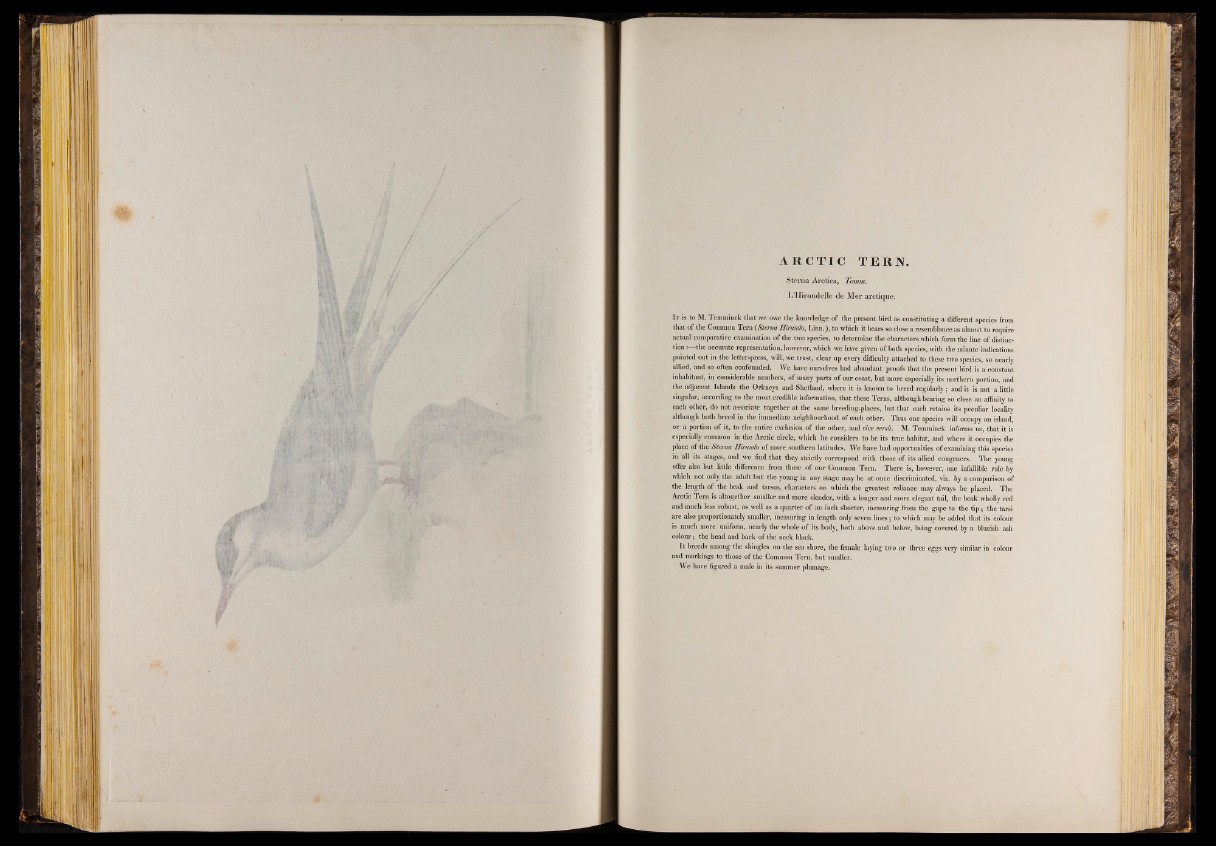
AR CT IC TERN.
Sterna Arctica, Temm.
L’Hirondelle de Mer arctique.
I t is to M. I emminck that we owe the knowledge of the present hird as constituting a different species from
that of the Common Tern (Sterna Hirundo, Linn.}, to which it hears so close a resemblance as almost to require
actual comparative examination of the two species, to determine the characters which form the line of distinction
:—the accurate representation, however, which we have given o f both species, with the minute indications
pointed out in;:the letter-press, will, we trust, clear up every difficulty attached to these two species, so nearly
allied, and so often confounded. We have ourselves had abundant proofs that the present bird is a constant
inhabitant, in considerable numbers, of many parts o f our coast, but more especially its northern portion, and
the adjacent Islands the Orkneys and Shetland, where it is known to breed regularly; and it is not a little
singular, according to the most credible information, that these Terns, although bearing so close an affinity to
each other, do not associate together at the same breeding-places, but that each retains its peculiar locality
although both breed in the immediate neighbourhood of each other. Thus one species will occupy an island,
or a portion of it, to the entire exclusion of the other, and vice versa. M. Temminck informs us, that it is
especially common in the Arctic circle, which he considers to be its true habitat, and where it occupies the
place of the Sterna Hirundo of more southern latitudes. We have had opportunities of examining this species
in all its stages, and we find that they strictly correspond with those of its allied congeners. The young
offer also but little difference from those o f our Common Tern. There is, however, one infallible rule by
which not only the adult but the young in any stage may be at once discriminated, viz. by a comparison of
the length of the beak and tarsus, characters 011 which the greatest reliance may always be placed. The
Arctic Tern is altogether smaller and more slender, with a longer and more elegant tail, the beak wholly red
and much less robust, as well as a quarter o f an inch shorter, measuring from the gape to the tip ; the tarsi
are also proportionately smaller, measuring in length only seven lines; to which may he added that its colour
is much more uniform, nearly the whole of its body, both above and below, being covered by a blueish ash
colour; the head and back o f the neck black.
It breeds among the shingles on the sea shore, the female laying two or three eggs very similar in colour
and markings to those of the Common Tern, but smaller.
We have figured a male in its summer plumage.